TRAINING TIPS FOR RAISING YOUNG WORKING ANATOLIANS
By Erick Conard, February, 2020
Training a young working Anatolian can be easy if done correctly. It can also be a total
disaster, depending on the actions of the person supervising the training as well as the
working genetics of the pup. The single most important thing a new owner can do for success
is to create an environment that automatically corrects the pup for improper behavior whether
the owner is there or not. As the human in the equation, we are supposed to have the big
brain. It's important that we use it!
Below are some of the things I watch for in training young working Anatolians.
1. Make certain the pup's ancestors are proven excellent working Anatolians
Before I select a pup from a breeder, I make certain the pup's ancestors are proven excellent
working Anatolians - proven with sheep/and or goats in a predator rich environment. I don't
just take the breeder's word that their dogs live 24/7 in a true working situation. I check
this out myself - I am skeptical since many times I've discovered that the actual working
situation is very different than what the breeder says it is.
2. Show Championships are meaningless when picking an Anatolian Pup for Working Ability
If I require a working Anatolian but pick a pup from show-only Anatolians who are
untested for actual working ability, the pup may or may not have the high level of working
ability I require. Frequently they don't. Also, for a first-time owner of a working Anatolian pup,
a show-only "breeder" without working experience might lack the knowledge the new owner requires
when various working problems arise as the pup ages. Many show-only "breeders" incorrectly select for
behavioral traits that have helped them win in the ring rather than for behaviors required in
working Anatolians, since many show-only breeders have little to no experience with the temperament, demeanor,
and behaviors required of a true working Anatolian.
When a breeder says they are dedicated to the preservation of the breed I expect that breeder to
make every attempt to maintain superior working genetics in their lines. After all, the
Anatolian IS a livestock guardian breed and has been for thousands of years! But when I see
generations of show-only genetics without proven working genetic being infused into these
show-only lines, I question the level of dedication to breed preservation that "breeder" actually
has. Sadly, "generic show dog" traits are antagonistic to excellent working behaviors and when
selected for over generations, these "generic show dog" traits will ultimately reduce that
lines ability to produce superior working Anatolians!!! Surely nobody wants that!
3. Never blame a pup for improper behavior - Blame yourself
I never blame the pup for behaving in a way I don't like. I blame myself! If the pup
gets away with bad behavior, I failed to create an environment for the pup that automatically
corrects all improper behavior. Therefore, I am at fault, not the pup!!! I immediately alter
the pup's environment so that the pup will not engage in bad behavior without immediate correction.
Right now, I have two Anatolian pups (3 ˝ months old) with Nubians having babies. The pups
have been in the pasture with the goats and remain there as the kids are being born. Now more
than a dozen kids are running around the pups' pasture all day and night and more are on the way.
Naturally the pups are curious. However, these goats, selected for their excellent training
ability, don't allow the pups near their kids. When the pups move too fast near the kids or
get too close to the kids, the nannies charge the pups and knock the pups over if the pups don't
retreat quickly enough, then the nanny returns to the kid. The pups are learning to watch from an
appropriate distance. This situation works because the pups are always corrected whether I am
there or not! Each day I evaluate the pup/goat interactions. The moment I see the level of
power of the pups increase to almost equal the level of the goats, I will remove the pups to
another pasture with more powerful goats without kids. (See "NOTE" below.)
When in training,
I cannot allow the young dogs to ever believe they could or should play with and
over-power a goat, no matter how small, weak, or helpless! With the working
genetics in these pups and the early excellent training they are receiving from
the goats, it is quite possible that they can remain with the Nubians and their
kids indefinitely. However, I know it is totally my responsibility to watch and
observe the puppy/goat interactions and change the pup's environment the second I see the
goats are unable to successfully punish the pups for improper behavior!
The puppy play seems
most insistent when the pups are 4 months to a year, so no matter how well the pups are
doing now in the near future their larger size will be more intimidating to the goats and they
will want to play with more enthusiasm. Only the most secure and protective goats will stop
a pup determined to play with his/her goat friends during this energetic phase!!! It is my job
to be certain that never happens!
(NOTE!!! Most owners should not place their unsupervised pup with goats who are kidding.
Success doing this is only possible when the owner has a high level of experience, the
working genetics of the pups are truly superior, and the goats are completely comfortable
with Anatolians and have been selected for generations for their superior training ability!
As a precaution, after seeing one pup [at 4 months] use its mouth to play gently with a kid,
even though the pup turned loose the moment an adult goat approached, I moved both pups
to another pen. [These pups had also been with about 60 ducks daily without incident.]
This new pen had 20 goats [10-12 months old] who were with multiple adult Anatolians
since birth. They were friendly but didn't allow any improper behavior in the pups;
they didn't tolerate any puppy play! This move provided lots of goat interactions and
provided strong reinforcement to proper behavior around goats. However, if the pups,
as they age, become so bold they no longer respect these young goats, my next move will
be to a pen of older dominant adult nannies. If this fails, a next step would be to a
pen of adult male goats. If those goats couldn't control the pups, my final move would
be to remove the pups from the goats entirely except when under my direct supervision,
when the pups would be placed with young tempting goats. I would supply the necessary
immediate corrective discipline. That being said, with the early training experiences
I provide to my pups, who all have excellent working genetics, I have never had to move
past step two.)
ADDITIONAL UPDATE: For my management purposes, I had placed three young Anatolians
in with older pregnant goats. My intention was to identify goats near kidding and
provide carefully planned introduction to kidding goats for each pup. However,
the record ice and snow in mid-February, 2021, changed all my plans.
First we had an ice storm that left an ice layer of 1/2 inch on everything. That
was followed by a total of about eight inches of snow. The temperature didn't get
above freezing for six days and remained below freezing for two more nights. In
the past we've gone years without getting below freezing for more than a couple of
hours in the night. We've never been below freezing for six straight days and nights!
I lost electricity and water and moved into town, thinking I could return each day
to feed the animals. Luckily, I'd put out plenty of hay and I use mollassas tubs,
so my goats, horses, and llamas had food to eat. However, for three days, even
though I tried, I was unable to drive out to my ranch. No food was given to my dogs.
Making things worse, I had scheduled my kidding for the day after that first ice storm!
So for the three days I couldn't make it out to the ranch, my goats were having kids with lows
between zero degrees F and five degrees F. Even though they had shelter, wet newborns
can't survive at zero degrees F. All kids born quickly froze.
My three young dogs' first kidding experiences seemed to be a disaster! As they were
supposed to do, the dogs cleaned up the dead kids by eathing them, which also provided
their food.
The first day the temperature was above freezing (47 degrees in the afternoon) I had
a kid born that dried out and survived. As I was leaving I wondered if I'd see that
kid alive the next day or if these young Anatolians would use him as food also.
Just before I drove off, with the temperature already dropping below freezing,
I saw one of my young dogs curl around the kid, who snuggled up against her stomach.
The kid's mom stood calmly over her dog-warmed kid, occasionally putting her head
down to smell the kid. Dog, kid, and mom were all calm and at ease, putting me
at ease as well.
That first surviving kid and all kids born after that day survived and are currently living with
the young dogs who cleaned up the dead babies as their first real exposure to kidding.
I have selected for superior working ability since 1985 and this experience proves
to me that selection for superior working ability pays off.
Superior working ability
is revealed only in Anatolians raised in a true working environment. Once an Anatolian's
true level of working ability has been ascertained, only those Anatolians PROVEN to
possess superior working ability should EVER be bred! All my many show wins
and CHAMPIONSHIPS are USELESS when considering SUPERIOR WORKING ABILITY - THE ESSENCE
OF THE BREED!!!!
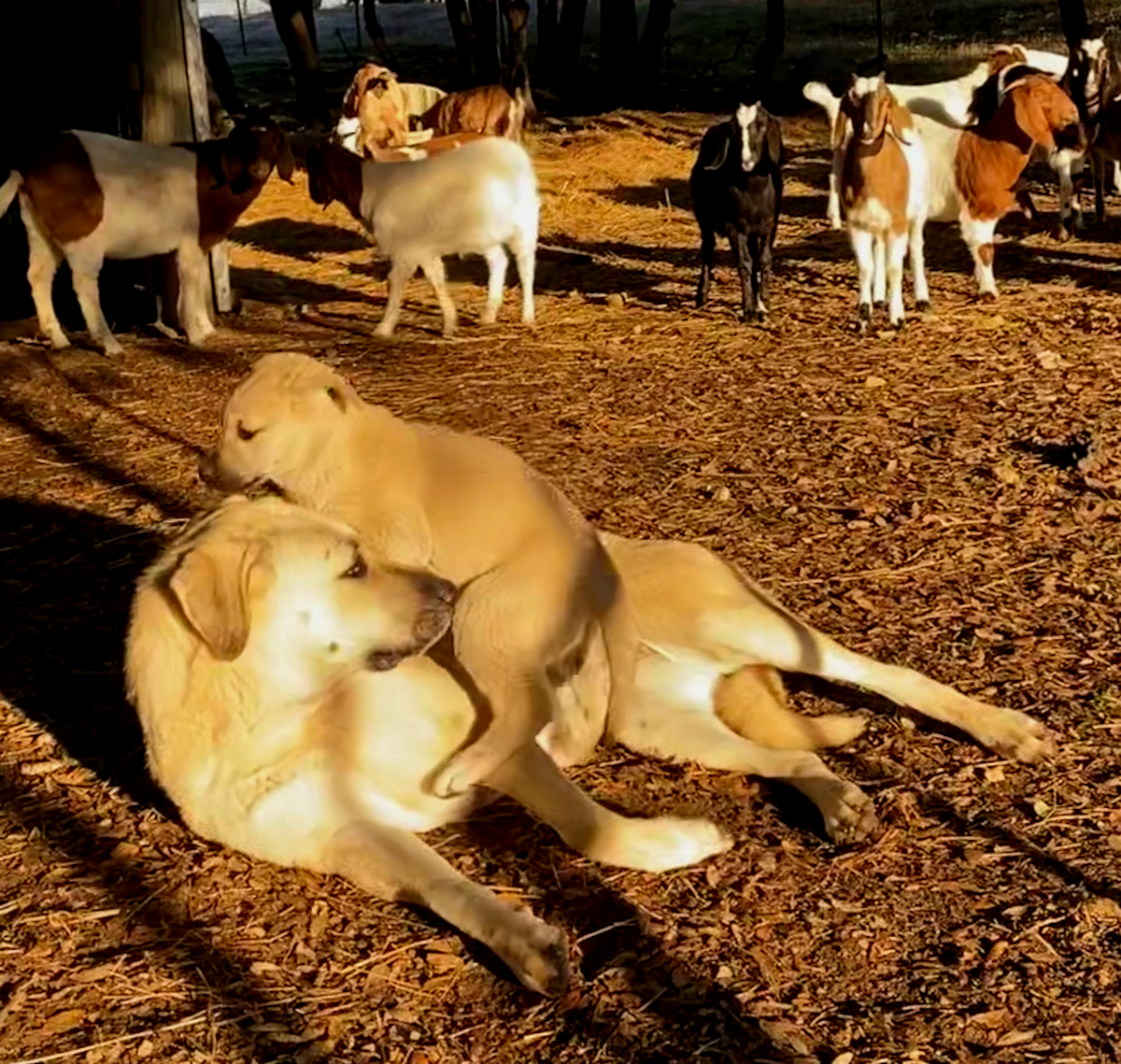
4. Correct the pup at the earliest possible moment in the pup's steps toward play
Puppy play doesn't begin when the pup grabs a goat's neck or legs. Puppy play is a series
of steps taken by the pup that ends with improper grabbing. The first step is taken when
the pup develops a heightened interest in a goat. This heightened interest is observable
in the dog's posture and facial expressions.
In the next step, the pup moves quickly forward
toward the goat. The pup's interest is obvious and apparent.
In the final step, the pup
engages with the goat by grabbing the goat's neck or legs in play. The pup is completely
unaware of the goat's discomfort.
The most effective time to stop this bad behavior is the
first step in the series - when the pup displays a heightened level of interest in a goat.
The degree of difficulty in stopping puppy play increases exponentially at each step of this
series leading to physical grabbing. It is vital you disrupt the behavior before the pup moves
forward. Absolutely don't wait until the pup grabs the goat with its mouth!!!
The correction
is verbal, NEVER physical; it is immediate and harsh. In a grating, coarse, and guttural voice,
I say the pup's name, then something like "Cut it out" or "Stop that" and I point directly at
the pup. I expect the pup to immediately drop to the ground and show submission and contriteness
for "thinking" about playing with the goat. At the least, I want the pup to lower his/her head
to the ground in submission.
If the pup doesn't immediately respond this way, I would have failed
to do the necessary early interactions with the pup to establish my proper alpha position (correct
alpha position is not "mean" dominance… it is "loving" dominance). This failure means I should
move back to an earlier phase of training - I must properly establish my alpha dominance before I
introduce my pup to kids or poultry! Never forget that it is vital to stop all play behavior with
charges at the earliest possible moment!
When the pup drops to the ground, showing submission and
contriteness, I wait a few seconds and then call the pup to me in a loving voice. Then I pet and
love on the pup, saying to the pup, in a sweet and loving voice, that I know the pup didn't mean
to puppy play and is going to be good from now on. Forgiveness and loving acceptance are perhaps
the most important part of the correction cycle. It seems to encourage pups to engage in better
behavior than if it is not given. It also sets up a learning response I use for many different
situations.
The learning response series is: (a. Harsh verbal correction, (b. the Anatolian drops
to the ground and shows submission and contriteness, (c. I verbalize and physically show forgiveness,
and (d. the Anatolian comes to me for loving kindness.
5. Be smart - Feed pups well prior to placing them with kids or poultry
It's important to feed a pup generously, especially as a pup begins to learn that play is never
appropriate with kids and poultry. (I assume you have already proven that the pup is completely
free of play with adult sheep/goats! If not, do not begin training with kids or poultry!)
When I place the pups and kids together just a few hours a day (under my supervision at all times),
I feed the pups just before I put them together. When the pups and kids are together 24/7, I
am especially careful to feed the pups excellent quality food with lots of variety and quality
(high quality non-grain puppy food with fresh goats milk, organic duck eggs, and fresh meat cut
in small pieces) … and I feed often enough that they are satisfied all the time. A satisfied pup
shows less predatory puppy behavior!
With poultry, I only turn the ducks loose after the morning
feeding, never before. And I supervise from a short distance for weeks before I begin to feel
more confident in the pup's reliability. Generally, when a heat wave comes through or summer
sets in, I tend to trust the pups throughout the day with the poultry. I use high temperatures
to help calm puppy play with my poultry! (It works well with kids also!)
As always, stop all
play behavior at step one (sudden and intense interest but no motion forward). And keep in
mind that a full puppy on a hot day is less likely to want to play, even with little and exciting
animals. If the pup is full and it is really hot and the pup still wants to play with animals it
is supposed to guard, you have moved forward too fast in your training program. Take a step or
two back and work more diligently on the basics!
6. Extra work is required when a pup was allowed to play-chase without immediate correction
A pup who expresses too much interest in chasing its charges must not be placed with an animal
that the pup has successfully chased unless the owner is right there and actively watching the pup
and available for immediate correction. The pup can be placed in an adjacent pen so the pup
can smell and see the animals but cannot chase!
Each day re-introduce the pup to the animals
and if that pup even thinks about chase, the owner must immediately shut down the thought of
play with a harsh and intimidating correction (NO HITTING - EVER)! Don't wait! The moment
you see the thought of chasing on the pup's face, chastise the pup harshly (AGAIN - NEVER HIT!).
The pup should drop to the ground at the owner's first yell and demonstrate submission.
(If this doesn't happen, the owner has moved too fast and should go back and work on alpha
control!) The worse the offense is the longer, louder, and harsher the owner's response
needs to be. It is important, however, that the owner is completely under control of his/her
emotions. If the owner isn't, the owner must put the pup up and go in until they have their
own emotions under control. If the owner can't control his/her own emotions how can the owner
expect to effectively control a pup whose emotions are out of control? The out of control
owner's training won't be effective.
A method I have used successfully is to realize that
each misbehavior I see is an excellent training opportunity for the pup because I am right
there and can demonstrate to the pup that the pup's behavior is completely unacceptable!!
I actually get excited and happy when the puppy misbehaves in front of me because I can correct
that misbehavior!!! My challenge then is to have the right harsh tones … but I'm in complete
control of my emotions as I train the pup!
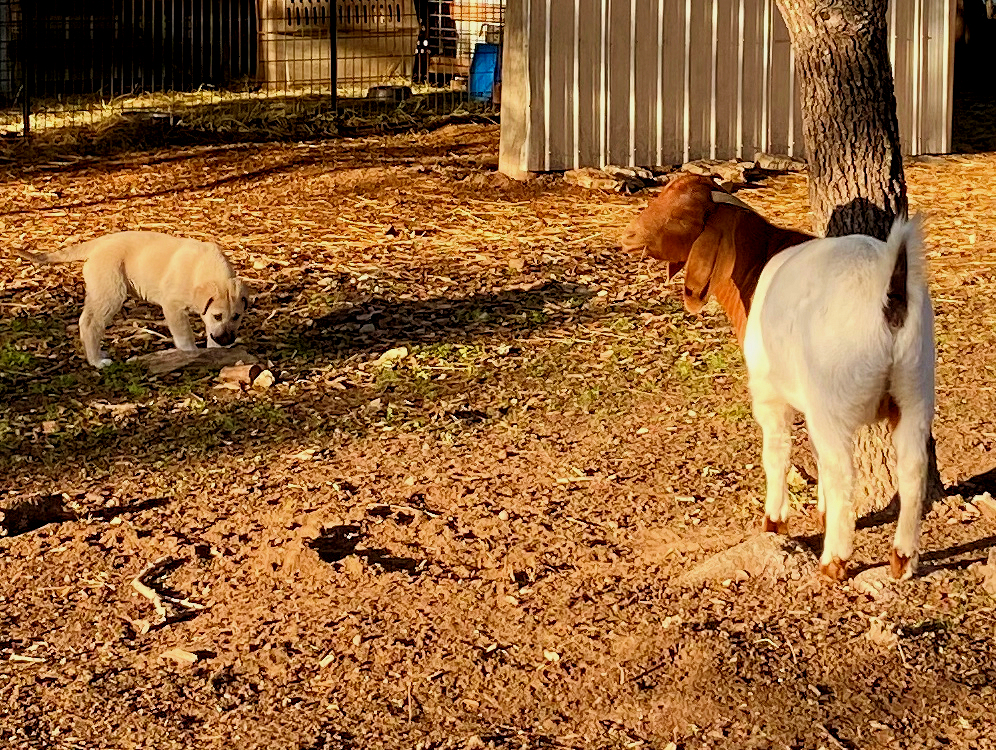
7. Hot days and a full belly are your friends
As the owner begins to believe the pup is reliable with its charges, the owner should wait
for a relatively hot day to initially test the pup's reliability with more distant supervision.
A full belly and a hot day create an excellent environment for this phase since the full belly
seems to reduce any predatory-type puppy play and the hot day causes the pup to want to lay
around.
Everything an owner can do to increase the pup's chances of success should be done!
Hot days, a full belly, and excellent training goats really help an owner feel quite successful
with their puppy training. But if a cold front arrives and the temperature drops 20 or 30
degrees, don't be surprised to see that "lazy" pup jump up and start running around with
excitement, looking for something to play with! Also, watch out for early morning and evening
twilight surges of energy! Just because the pup was laying around most of the day, don't expect
the pup to always lay around. A change in the temperature can revive and energize the pup in
ways that require different and more direct management!
8. Praise for good behavior is even more important than correction for bad behavior
An owner should praise a pup generously when he/she sees the pup NOT chase; it's wonderful when
the pup choses to remain still and calmly watch during a potential puppy play situation. Watching
the pup sitting calmly is exciting and rewarding and the pup needs to hear that kind of approval
in the owner's voice as often as possible. The more often the pup is given a clear understanding
of the behaviors the owner likes, as well as the behaviors the owner doesn't like, the faster
the pup will behave in the way the owner wishes (as long as these behaviors are within the
Anatolian behavioral patterns).
Some behaviors one might want in an Anatolian are outside
the range of Anatolian behavioral patterns. Please don't expect an Anatolian to behave in
a way that is completely alien to his/her genetic programing. No amount of praise or chastisement
will ever work if the behavior being asked for is alien to the Anatolian! It is important
that you learn exactly what is and what is not normal Anatolian behavior in various situations.
Having an experienced and knowledgeable working breeder who enjoys providing assistance and information
to his/her puppy buyers can be a real asset!!!
9. Fully investigate disasters you didn't see happen before you blame the pup for them
At some point the owner will conclude that a pup's behavior is reliable and place the pup with its
charges unsupervised. Later, if the owner finds an injured or dead animal, the owner must not
immediately blame the pup. Examine the dead or injured animal carefully. If the pup were involved,
there should be teeth tears on the legs and/or neck. Also, the saliva in the pup's mouth will be
transferred to the fur. As the pup's saliva dries, the hair where the animal was mouthed looks like
hair gel was applied. Without teeth tears or any areas of "hair gel" observed on the dead animal,
it is unlikely that the pup caused the death.
The owner should then consider all alternate
possibilities for the animal's death. In any case, being cautious, the owner should move the
pup to a more supervised situation while he/she makes the determination.
Perhaps, however, the
investigation points directly at the pup. At this time, it is important to be much more watchful
and vigilant than in the past, to take a step or two back in the training program with the pup,
and to be prepared to take instant and verbally harsh corrective action for any misbehavior.
(You should be doing this anyway!)
A really good option is to move the pup to a pen of stronger goats
that won't allow any bad behavior! After a pup has engaged in improper behavior without being
instantly corrected, rectifying the situation and eliminating the improper behavior will require
much more work on the owner's part than if the pup had never been allowed to make that uncorrected
mistake. And the owner must never forget that the reason the pup made that uncorrected mistake is
that he/she misjudged the pup's level of reliability with its charges. In other words, don't blame
the pup… blame yourself!! And then immediately correct the pup's environment so the pup cannot make
that mistake again. At least, that's what I do!!!
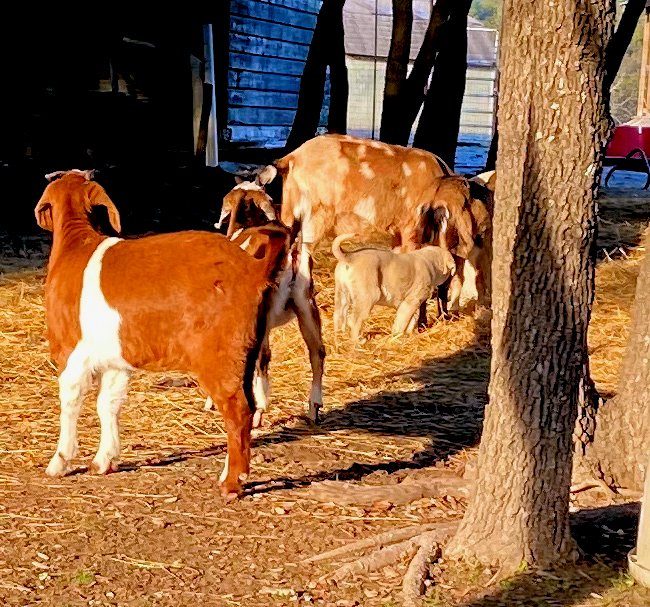
Training a young working pup (carefully selected from parents with generations of
proven superior working ability) can be easy and rewarding if the owner creates an excellent training
environment in which the environment automatically corrects the pup for any and all misbehavior.
When something goes wrong, the owner should examine what mistakes they made in creating that
"perfect" environment and rectify the flaw in the pup's environment so that particular thing
cannot go wrong again.
I can't emphasize enough that it will be much easier to train a working pup if the pup's
breeder has selected their Anatolians for generations for superior working ability as their
primary selection criteria. The only way to evaluate true working ability in an Anatolian is
when the Anatolian lives 24/7 with sheep and/or goats in a predator rich environment. All
other environments might give hints and ideas, but you won't really know the true details of
an Anatolian's working ability without observing that dog in a true working environment for
the lifetime of the dog.
|
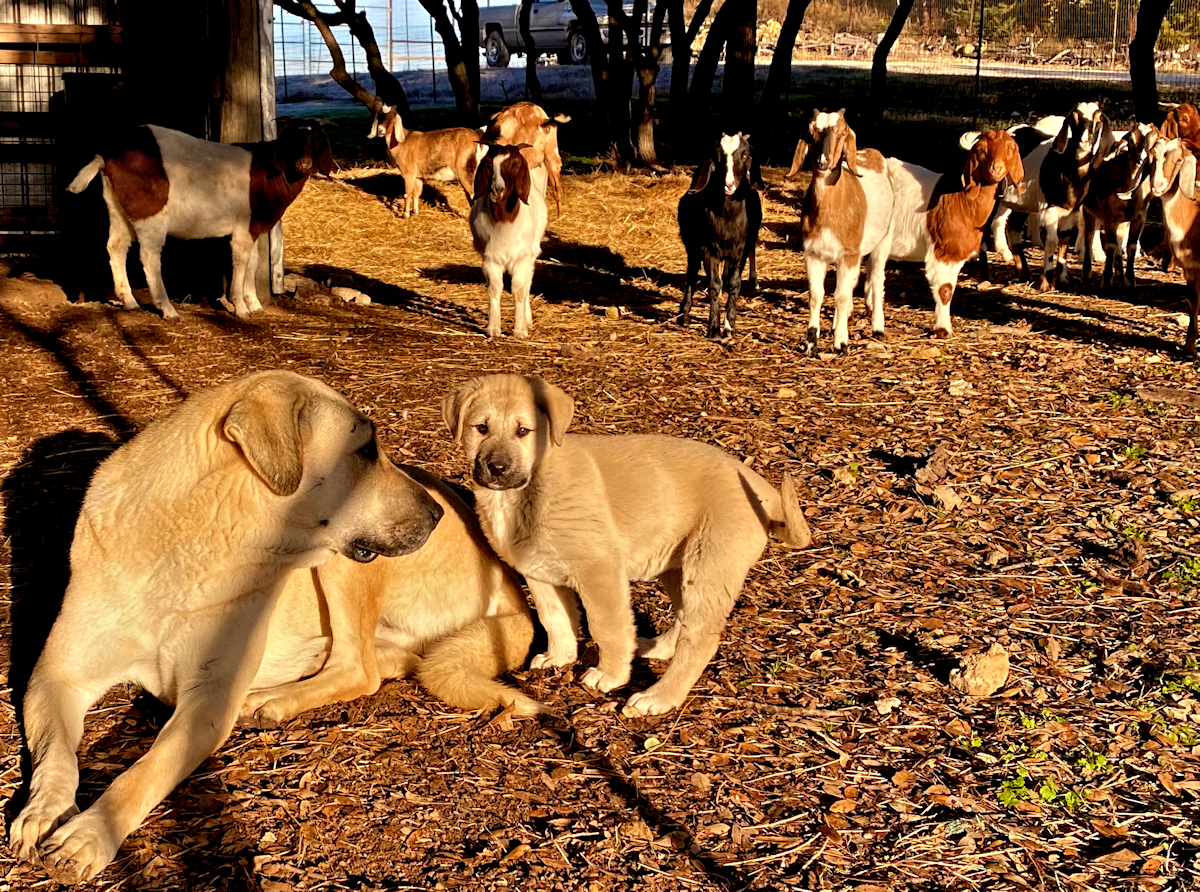
 Phone Numbers Link
Phone Numbers Link



 Click Picture to Return to Anatolian Main page
Click Picture to Return to Anatolian Main page
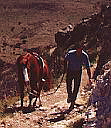 Click Picture to Return to Lucky Hit Main Home Page
Click Picture to Return to Lucky Hit Main Home Page